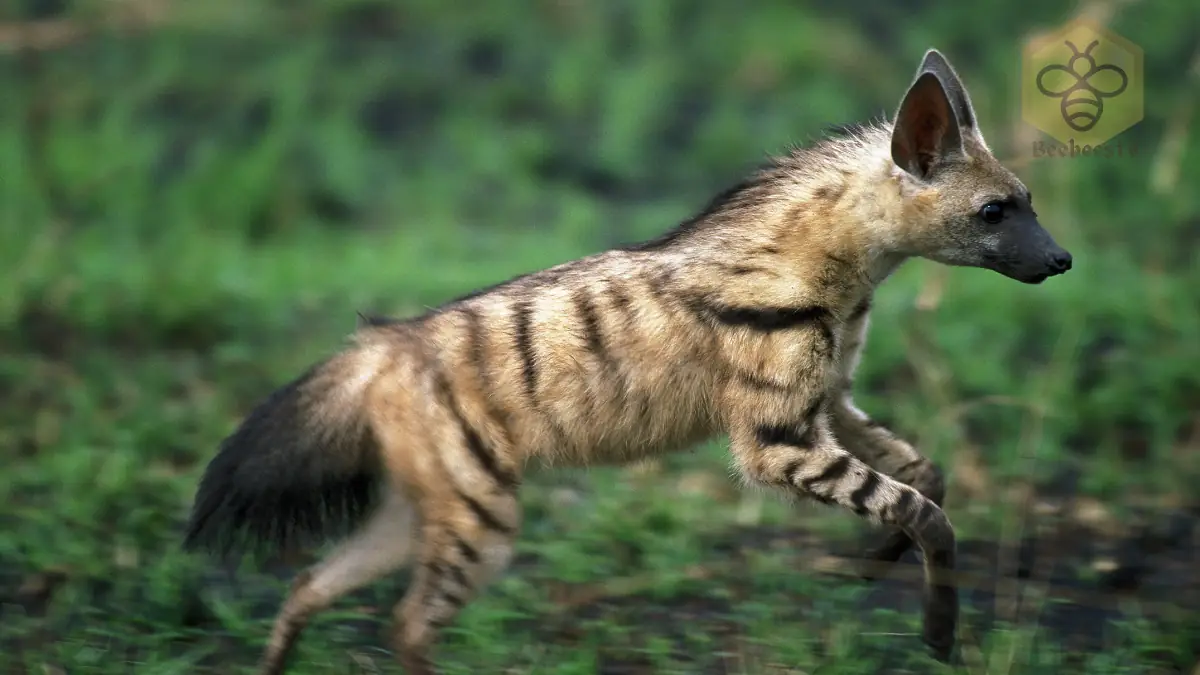Aardwolf: The Termite-Eating Hyena
Aardwolf
The aardwolf, often overshadowed by its larger hyena relatives, is a fascinating creature known for its termite diet and nocturnal habits. Unlike its carnivorous cousins, the aardwolf primarily feeds on insects, particularly termites. Native to eastern and southern Africa, the aardwolf is an important part of the ecosystem, playing a crucial role in controlling insect populations.
Scientific Overview
Scientific Name
The scientific name of the aardwolf is Proteles cristata.
Common Name
The aardwolf is commonly referred to as “aardwolf,” which means “earth wolf” in Afrikaans.
Scientific Classification
| Kingdom | Animalia |
| Phylum | Chordata |
| Class | Mammalia |
| Order | Carnivora |
| Family | Hyaenidae |
| Genus | Proteles |
| Species | Proteles cristata |
Types
There is only one recognized species of aardwolf, but it is divided into two populations based on geography: the eastern aardwolf and the southern aardwolf. Both exhibit similar behaviors and characteristics.
Habitat and Distribution
Habitat
The aardwolf is adapted to various habitats, including dry plains, open savannas, and grasslands. They prefer areas with soft, sandy soil, which makes it easier for them to dig into termite mounds.
Geographic Distribution
Aardwolves are found in eastern and southern Africa, with populations spread across countries like Kenya, Ethiopia, South Africa, Zimbabwe, and Angola.
Physical Characteristics
Size and Weight
Aardwolves are relatively small compared to other members of the hyena family. They typically weigh between 15 to 22 pounds and have a body length of 22 to 31 inches, excluding the tail.
Appearance
Aardwolves have a similar appearance to striped hyenas but are much smaller. They have yellowish-brown fur with black stripes running vertically along their bodies. Their long, bushy tail and upright mane, which stands on end when threatened, are distinctive features.
Diet and Feeding Habits
Diet
Unlike other hyenas, the aardwolf primarily feeds on termites. A single aardwolf can consume up to 250,000 termites in a single night. They use their long, sticky tongues to lap up termites from the ground.
Feeding Behavior
Aardwolves are nocturnal, hunting termites during the night. They are selective feeders, preferring termites from specific genera that don’t have chemical defenses. Aardwolves rely heavily on their sense of smell to locate termite mounds.
Predators and Threats
Natural Predators
Aardwolves are preyed upon by larger carnivores such as lions, leopards, and African wild dogs. They use their speed and burrows to escape predators, often hiding in abandoned aardvark holes.
Human Threats
Human activities such as habitat destruction, agricultural expansion, and road accidents pose significant threats to aardwolves. Despite their low conflict with livestock, they are sometimes killed by farmers who mistake them for predators.
Reproduction, Babies, and Lifespan
Mating Behavior
Aardwolves are monogamous, forming pairs that mate for life. Mating occurs during the rainy season when termites are abundant, ensuring plenty of food for their offspring.
Babies
Female Aardwolf gives birth to 2 to 5 cubs after a gestation period of approximately 90 days. Cubs are born blind and helpless, staying in the den for several weeks while being cared for by both parents.
Lifespan
In the wild, aardwolves can live for up to 10 years. In captivity, they may live slightly longer, reaching 12 to 15 years.
Population and Conservation Status
Population Size
Aardwolf populations are stable across most of their range. They are not considered endangered, although localized threats may impact specific populations.
Conservation Status
The aardwolf is listed as “Least Concern” by the International Union for Conservation of Nature (IUCN). Despite habitat fragmentation and other threats, they are not currently at risk of extinction.
Behavior and Lifestyle
Daily Activities
Aardwolves are nocturnal and spend most of the day resting in burrows or hidden areas. They emerge at dusk to hunt for termites and can cover large areas in search of food.
Communication
Aardwolves communicate through vocalizations, scent markings, and body language. They emit soft growls, yips, and other sounds, especially when threatened. Their large, upright manes are used as a visual display to ward off intruders.
Ecological Role
Importance in the Ecosystem
Aardwolf play a crucial role in controlling termite populations. By feeding on termites, they help prevent overpopulation, which can cause damage to vegetation and soil.
Impact on Humans
Aardwolves pose no threat to humans or livestock, as they do not hunt large prey. They are beneficial to farmers because they help reduce termite infestations that can damage crops.
FAQs About Aardwolf
- Are aardwolves related to hyenas?
Yes, aardwolves are part of the hyena family, but they differ significantly in their diet and size. - What do aardwolves eat?
Aardwolves primarily eat termites, using their long, sticky tongues to lap them up. - Where do aardwolves live?
Aardwolves are found in eastern and southern Africa, in dry plains and open savannas. - How long do aardwolves live?
In the wild, aardwolves can live up to 10 years, while in captivity, they may live longer, around 12 to 15 years. - Are aardwolves dangerous to humans?
No, aardwolves are shy, nocturnal animals that pose no threat to humans.
Conclusion
The aardwolf is a unique member of the hyena family, known for its insectivorous diet and nocturnal lifestyle. Though small and often elusive, aardwolves play an important ecological role in managing termite populations in their habitats. Despite human-related threats, their population remains stable, making them a successful species in the African landscape. Their fascinating behavior and adaptability continue to make them a subject of interest for wildlife enthusiasts and conservationists alike.
